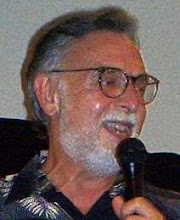In 1968, and for several years earlier during the period in which Stanley Kubrick was working on 2001: A Space Odyssey, the time, many believed, was ripe to take a stand on the war in Vietnam. This seemed particularly to be expected from an auteur who had made two earlier films (Paths of Glory and Strangelove) which, if they were not exactly pacifist statements, certainly seemed anti-war. (Wikipedia's notes on Paths of Glory, in fact, reveal that the film so tweaked the noses of the military hierarchy in France and Germany that it was banned in those countries for years.) Fans of the director just knew that if he set his mind to it, Kubrick was capable of making a devastating statement on the war. Yet it took Kubrick another two decades before he got around to making a cinematic statement on the war in Southeast Asia (Full Metal Jacket, 1987). In the first throes of absorbing 2001, it seemed that Stanley had decided instead to go cosmic on us, to take the decidedly longer view. Kubrick, in fairness, was never a "topical" film maker; his work was literary, not journalistic. He had, in fact, often turned to the novel for his source material.
When, years later, it was reported that Kubrick's magnum opus was chosen to be ranked first among the Vatican's selection of the forty-five most influential films of the twentieth century, and that Pope John Paul II had hosted a private screening of the film, the news was greeted among many Kubrick fans with a reaction somewhat akin to the reaction that an earlier generation had greeted the Hitler-Stalin pact. (Or, if that comparison seems a bit overblown for you, think Bob Dylan turning to Jesus.) By that point, however, we were not entirely surprised; we had had time enough to digest the fact that, great as the man was, grateful as we were to him for so much that was unforgettable in his work, the Stanley of our youth had proven to be a fiction.
As I alluded to in an earlier post, these musings were triggered anew for me when I attended a screening of The Shining hosted by the New York Times. I had some time ago come to the conclusion that essentially all of Kubrick's work played out on the level of dream rather than reality, and, of course, once one is prepared to view a film as a dream sequence, there are very few rules with regard to verisimilitude. Certainly, Eyes Wide Shut (1999), Kubrick's last work, was far from cinema verite. But there is a scene in The Shining that brought home for me Kubrick's essentially supernatural vision. After attacking his wife, Jack Torrance is subdued by her with a swing from a Louisville Slugger and then dragged to a food locker for safe keeping. Now, most of this film can be viewed as a psychological drama, the scenes being played out for us taking place in the fevered imaginations of the main characters. Jack's escape is pure magic. Almost as if out of embarrassment at using the plot device he descends upon to get Jack out of the locker, Kubrick does not show the bolt on the lock miraculously ascending; instead we only hear it jolting out of place. Ghostly twins and rapids of blood may exist in characters' minds, but locks don't get unlocked by themselves. We have left the realm of psychological drama and entered a metaphysical realm. Or at least it was a metaphysical realm until Heisenberg and quantum mechanics asked us to accept that anything is possible. While you are calculating the probability of a lock opening by itself, let us turn back to 2001.
I put out my cigarette, and went back into the theater to see just where Kubrick would take us on that memorable night in April of 1968. You may recall my having turned to my wife and saying during the film's intermission, "If the second half of this movie is anything like the first..." Well, by the movie's end, (yes, I know, I'm calling it a movie), Keir Dullea's fetus was spinning and filling the amniotic fluid of the cosmos, mankind reborn. My head was spinning, too. What hath Stanley wrought here? Was this poetic metaphor or were we being asked to believe in divine intervention?
And then reality overtook poetry. We crowded out into the night air of Times Square, and I saw a passing pedestrian, his head buried in a copy of The Daily News bearing the bold headline, KING DEAD. It took me a moment, unbelievably, to figure out which King the headline referred to, but any doubt about who had died could not have survived the subway journey on the A train back to Brooklyn Heights in a subway car filled with silent Black men and women barely able to contain their rage. We rushed home to turn on our television set, our first Sony Trinitron, newly capable of showing--in living color--television newsmen reporting from one American city after another against a backdrop of red/orange flames reminiscent of one of Hieronymus Bosch's visions of hell. Just a typical twenty-four hours in 1968. Life had become more vivid than art, had overcome art to the point where even Kubrick's call for attention would have to wait. There were still eight more months of 1968 to live through. 1969 would bring the abyss--Nixon, Chappaquiddick, Woodstock, the bombing of Cambodia, and, of course, the landing on the moon. Rumor had it that Kubrick had helped stage the event on a Hollywood sound stage. Who knows? Post-modernism had begun and in the closing days of that year, it was announced that Valium was the most prescribed drug in America. And so it goes.
Tuesday, October 09, 2012
Subscribe to:
Post Comments (Atom)






No comments:
Post a Comment